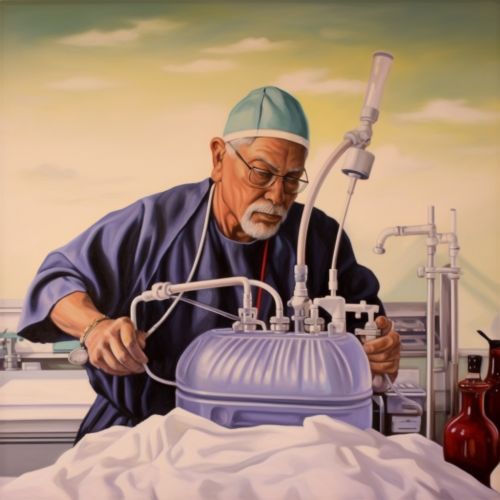Pleural fluid culture
Introduction
Pleural fluid culture is a laboratory test that identifies the microorganisms causing infection in the pleural space of the lungs. This test is typically ordered when a patient presents with symptoms of a pleural effusion, such as shortness of breath, chest pain, or a persistent cough, and the doctor suspects an infection as the underlying cause.
Procedure
The procedure for obtaining a pleural fluid sample for culture involves a technique known as thoracentesis. This is a minimally invasive procedure performed under local anesthesia. The doctor inserts a needle through the chest wall into the pleural space to extract the fluid. The fluid is then sent to the laboratory for analysis.


Laboratory Analysis
In the laboratory, the pleural fluid sample is first examined under a microscope to identify any visible microorganisms. The sample is then cultured, or grown, on special media that promote the growth of bacteria, fungi, or other pathogens. The culture is incubated for a period of time, often 24 to 48 hours, to allow any present microorganisms to multiply and become more easily identifiable.
Identification of Pathogens
Once the culture has grown, laboratory technicians use a variety of methods to identify the specific pathogens present. These can include biochemical tests, antibiotic susceptibility testing, and molecular methods such as polymerase chain reaction (PCR) or next-generation sequencing. The results of these tests can help guide the patient's treatment plan, as different pathogens may respond to different antibiotics or other therapies.
Clinical Significance
The results of a pleural fluid culture can have significant implications for a patient's treatment and prognosis. If the culture is positive, indicating the presence of an infection, the patient will typically be started on antibiotics or other appropriate therapy. The specific type of pathogen identified can also provide clues about the source of the infection, which can be important for preventing future episodes.
Limitations and Challenges
While pleural fluid culture is a valuable diagnostic tool, it is not without its limitations. The procedure for obtaining a sample can be uncomfortable for the patient and carries a small risk of complications, such as infection or pneumothorax. Additionally, not all pathogens can be grown in culture, and some may take longer than others to grow. Finally, the results of the culture must be interpreted in the context of the patient's overall clinical picture, as a positive culture does not necessarily mean that the identified pathogen is the cause of the patient's symptoms.
Future Directions
Advances in molecular diagnostics are likely to have a significant impact on the field of pleural fluid culture in the future. Techniques such as next-generation sequencing and metagenomic analysis have the potential to identify a wider range of pathogens more quickly and accurately than traditional culture methods. These advances could lead to more personalized and effective treatment plans for patients with pleural infections.
